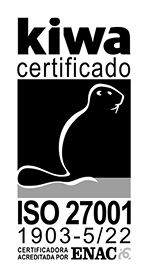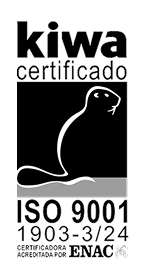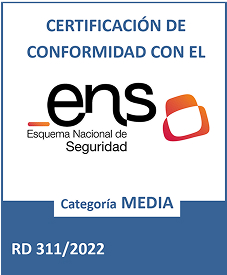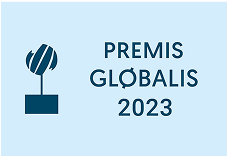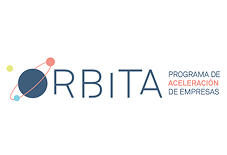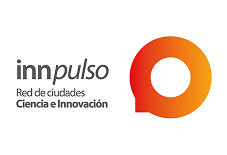When you land on a website and struggle to read the text, find the buttons, or distinguish the colours, you are experiencing what many people face on a daily basis. For those with reduced vision, browsing the internet can be frustrating, slow, and sometimes impossible. Visual accessibility is not just a recommendation: it is the way to make sure that everyone can use your website without difficulty. And this is where tools like Acctua make a real difference.
What is visual accessibility?
Visual accessibility means designing websites that are easy to see and use for people with any type of visual impairment. This is not just about enlarging text or improving contrast: it involves thinking about how information is perceived, how navigation works, and how users interact with content.
Imagine a physical shop. If the lighting is too dim, the signs are too small, or the colours are confusing, many people will not be able to find what they are looking for. The same happens online: if we don’t adapt colours, typography, buttons, and images, we are excluding a large percentage of users.
Why it matters
According to the World Health Organization, around 2.2 billion people worldwide live with some form of visual impairment (WHO, 2020). In Spain, more than one million people have low vision. Ignoring visual accessibility means limiting your audience, losing potential customers, and also failing to comply with current legislation, such as Law 34/2002 and Royal Decree 1112/2018.
But beyond legal compliance, visual accessibility is a sign of social responsibility: it ensures that everyone can read, shop, get information, and participate on your website without barriers.
Signs that your website needs improvements in visual accessibility
- Text that is too small or uses difficult-to-read fonts.
- Low contrast between background and text.
- Important information conveyed only through colour.
- Images without descriptions (alt text).
- Complicated navigation that requires precise vision.
If any of these sound familiar, your website is probably excluding users with reduced vision.
Basic principles to improve visual accessibility
- Adequate contrast: Ensure that text stands out clearly against the background. For example, dark text on a light background or vice versa.
- Clear, scalable typography: Use easy-to-read fonts and allow users to enlarge text without breaking the layout.
- Colour choices for everyone: Avoid combinations that may cause confusion, such as red and green for people with colour blindness.
- Alternative text for images: Screen readers can “read” these descriptions for users with low vision.
- Flexible, accessible design: Ensure the site works properly with zoom and that buttons are easy to locate.
How Acctua improves your website’s visual accessibility
Implementing all these changes manually can be costly and complex. This is where Acctua comes in—our tool is designed to enhance your website’s visual accessibility quickly and easily, without changing your code.
With Acctua, you can:
- Automatically adjust contrast and colours so that all content is legible.
- Scale typography and visual elements without breaking your website’s structure.
- Adapt buttons and menus to make navigation easier.
- Add automatic descriptions to images and graphic elements.
- Allow users to personalise their browsing experience according to their visual needs.
In short, Acctua transforms your website into an inclusive space, where everyone can browse, shop, or complete online procedures without frustration. This not only improves the user experience but also strengthens your reputation and increases customer and visitor loyalty.
Benefits of accessible web design
- Greater reach and engagement: The more people can use your website without barriers, the more users you will attract.
- Legal compliance: Avoid fines and legal issues related to accessibility regulations.
- Positive brand image: An inclusive company projects values of responsibility, closeness, and empathy.
- Better SEO: Many accessibility improvements overlap with good search engine practices, such as clear text, descriptions, and intuitive navigation.
Case studies: how visual accessibility makes a difference
- An e-commerce site that adapts its design with Acctua sees an increase in purchases from users with low vision, who previously abandoned their carts due to difficulties reading prices or descriptions.
- An online services website reduces form errors by making fields and buttons clearly visible, which decreases support queries and boosts satisfaction.
- A blog that improves its typography and contrast sees increased reading time and visitor interaction.
These are real improvements that directly impact both user experience and business results.
Small changes, big impact
You don’t need to redesign your entire website to be inclusive. Simple adjustments can make a difference: increasing contrast, using legible fonts, adding image descriptions, or reorganising content to make it clearer. With Acctua, these improvements are applied automatically and tailored to your users’ needs.
Visual accessibility as a future strategy
The digital world is moving fast, and user expectations are high. More and more people expect to interact online without barriers. Investing in visual accessibility is not just a legal or ethical obligation: it is a business strategy that ensures your website is ready for all users, today and in the future.
Ultimately, investing in visual accessibility means investing in people. It means that every user, regardless of their vision, can access your content, buy your products, and use your services efficiently and enjoyably.
Find out the accessibility level of your website with a free audit.
